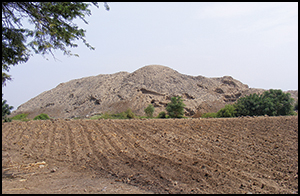Crossref Citations
This article has been cited by the following publications. This list is generated based on data provided by
Crossref.
Mauricio, Ana Cecilia
2018.
Reassessing the Impact of El Niño at the end of the early intermediate period from the perspective of the Lima culture.
Ñawpa Pacha,
Vol. 38,
Issue. 2,
p.
203.
Caramanica, Ari
Quilter, Jeffrey
Huaman, Luis
Villanueva, Fiorella
and
Morales, Claudia R.
2018.
Micro-remains, ENSO, and environmental reconstruction of El Paraíso, Peru, a late preceramic site.
Journal of Archaeological Science: Reports,
Vol. 17,
Issue. ,
p.
667.
Burger, Richard L.
2019.
Understanding the Socioeconomic Trajectory of Chavín de Huántar: A New Radiocarbon Sequence and Its Wider Implications.
Latin American Antiquity,
Vol. 30,
Issue. 2,
p.
373.
Nesbitt, Jason
2020.
Ancient agriculture and climate change on the north coast of Peru.
Proceedings of the National Academy of Sciences,
Vol. 117,
Issue. 40,
p.
24617.
Caramanica, Ari
Huaman Mesia, Luis
Morales, Claudia R.
Huckleberry, Gary
Castillo B., Luis Jaime
and
Quilter, Jeffrey
2020.
El Niño resilience farming on the north coast of Peru.
Proceedings of the National Academy of Sciences,
Vol. 117,
Issue. 39,
p.
24127.
Washburn, Eden
Nesbitt, Jason
Burger, Richard
Tomasto-Cagigao, Elsa
Oelze, Vicky M.
and
Fehren-Schmitz, Lars
2020.
Maize and dietary change in early Peruvian civilization: Isotopic evidence from the Late Preceramic Period/Initial Period site of La Galgada, Peru.
Journal of Archaeological Science: Reports,
Vol. 31,
Issue. ,
p.
102309.
Goodbred, Steven L.
Dillehay, Tom D.
Galvéz Mora, César
and
Sawakuchi, André O.
2020.
Transformation of maritime desert to an agricultural center: Holocene environmental change and landscape engineering in Chicama River valley, northern Peru coast.
Quaternary Science Reviews,
Vol. 227,
Issue. ,
p.
106046.
Uceda, Santiago
Gayoso, Henry
Castillo, Feren
and
Rengifo, Carlos
2021.
Climate and Social Changes: Reviewing the Equation with Data from the Huacas de Moche Archaeological Complex, Peru.
Latin American Antiquity,
Vol. 32,
Issue. 4,
p.
705.
Warner, Jacob
and
Alaica, Aleksa K.
2022.
Contextualizing the influence of climate and culture on bivalve populations: Donax obesulus malacology from the north coast of Peru.
The Journal of Island and Coastal Archaeology,
p.
1.
Vining, Benjamin R
Hillman, Aubrey
Contreras, Daniel A
and
Tejedor, Ernesto
2022.
Expanded agroecological niches and redistributed risks in northern Peru’s Chicama Valley during late-Holocene ENSO climate changes.
The Holocene,
Vol. 32,
Issue. 12,
p.
1393.
Delle Rose, Marco
2022.
Landscape Modifications Ascribed to El Niño Events in Late Pre-Hispanic Coastal Peru.
Land,
Vol. 11,
Issue. 12,
p.
2207.
Larrain, Alina Álvarez
and
Nesbitt, Jason
2023.
Socio-Environmental Research in Latin America.
p.
233.
Rivera Prince, Jordi A.
and
Morales, Amanda Brock
2024.
Backdirting: Theorizing Backdirt through Time, Place, and Process.
Journal of Field Archaeology,
Vol. 49,
Issue. 2,
p.
98.



